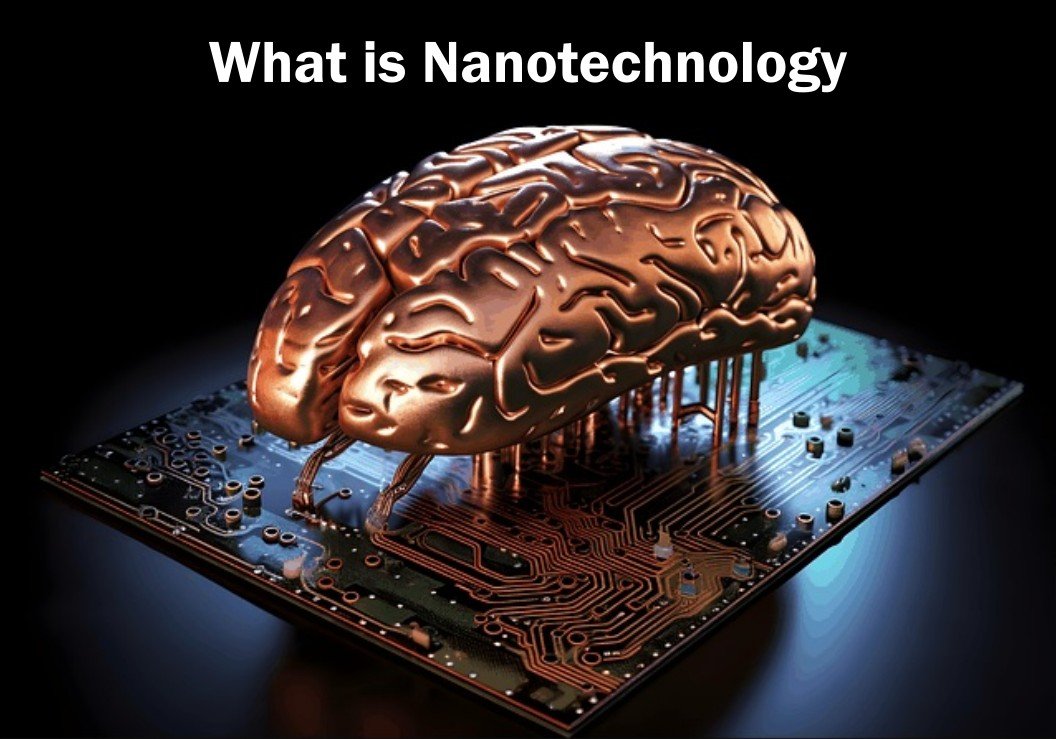What is Nanotechnology? Uses, Purposes and Examples

Credit - Pixabay
Nanotechnology is one of the core technologies driving toward a new industrial revolution. It can work on derivatives that measure less than 100 nanometers (nm). The technique helps explore the unique properties and functions of nanomaterials. Remaking or redesigning these materials has applications in the electronics, sports, and healthcare sectors.
Nanotechnology is a scientific term related to using tiny structures and devices. The field manipulates atoms and molecules at the nanoscale for productive purposes. Today, the technology comes into use in electronics, energy, medicine, textiles and many other applications. The scale of the derivatives is usually smaller than 100 nanometers (nm). A nanometer is one billionth of a meter (small unit of measurement). For instance, a paper sheet is approx 100,000 nanometers thick. Due to their compact size, nanomaterials have a large surface area-to-volume ratio. They can have high reactivity, strength, and conductivity.
Also Read -
Purposes of Nanotechnology
Nanotechnology works with atoms and molecules on the nanoscale scale to enhance their qualities. It uses the unique capabilities of nano-sized particles to develop new materials, devices, and systems. The theory is that small-sized materials exhibit different physical and chemical properties than the same materials at a larger scale. We can use this technology everywhere, from electronic devices to medical treatments. It is primarily helpful for the following reasons:
Improved materials
Nanomaterials are stronger, lighter, and more durable than conventional materials. These advancements are beneficial in many industries, including transportation and construction.
Energy efficiency
We can use nanoscale technology to make more efficient solar cells and batteries. These nanomaterials can reduce greenhouse gas emissions and dependency on fossil fuels.
Better medical treatment
Nanoscale technology has extensive applications in the medical field. It helps create effective nanomedicine, diagnostic tools, and equipment.
Removing water contaminants
Nano techniques help improve water filtration and purification. It can create more effective filters for removing impurities from water.
Food safety
Nanomaterials are worthwhile for food packaging and preservation. Additionally, we can use the technology to create sensors to detect food contaminants.
Clean environment
Nanotechnology can help remove toxins from the environment and safeguard it. For example, nanoparticles can be utilized to produce catalysts that transform contaminants into less toxic compounds.
Personal care
Nanoparticles can penetrate deeply into the skin and produce efficient results. Today, many cosmetics companies use insoluble nanoparticles to make skincare and hair care products.
Uses of Nanotechnology
Nanotechnology incorporates various scientific disciplines, including physics, biology, and materials science. The field tends to revolutionize many technical zones. Here is a discussion of its uses based on the nano technique type.
Nanomaterials
The properties of nanomaterials are different from their bulk counterparts. Their manipulation at the nanoscale makes them highly beneficial products. For example, carbon nanotubes are incredibly strong and conductive nanomaterials best for electronics and energy storage. Likewise, nanoparticles have unique properties best for cosmetic and medical care.
Nano energy
Nanoenergy involves the application of nanoscale technology in the energy sector. It helps generate, store, and use energy more effectively. Nanofuel cells, nanobatteries, and nanosolar cells are a few examples. These microscopic devices and materials are lighter and more efficient than conventional ones.
Nanoelectronics
Nanoelectronics involves utilizing electronic components at the nanoscale for fast and efficient gadgets. Nanoscale transistors and memory devices are a few nano-electronic products. These energy-efficient devices can process and store excessive amounts of data.
Nano-optics
Nanophotonics (nano-optics) comprises the manipulation of light on the nanoscale. It leads to the creation of new optical devices and technologies. Nano-optical fibers and antennas are two examples. These tiny optical devices can improve the efficiency of communication systems and medical imaging equipment.
Nanomedicine
The application of nanotechnology in the medical domain is highly beneficial. It involves using tiny particles and devices for diagnosing and treating diseases. For instance, diagnostic nanoparticles offer high-resolution pictures of the human body's inside. They can help detect diseases at an early stage. Similarly, targeted drug delivery systems use nanoparticles and help increase the efficacy of the treatment.
Nano-robotics
The creation of minuscule robots and devices with nanoscale functionality is worthwhile. Some examples of nano-robotics are nanorobots and molecular machines. These derivatives can help assemble and repair other equipment.
Eventually, the role of nanotechnology is significant in almost all industries, from food packaging to electronics and computing. While this technology has enormous potential, it also raises concerns about potential health and environmental hazards. There is some concern that nanoparticle exposure could be hazardous to human health because it permeates cells and tissues quickly. Hence, extensive study to assess its pros and cons is necessary before you use it in a specific zone.
Examples of Nanotechnology
In the natural world, there are several instances of nanometer-sized structures. Many technologies have used such nanostructures unintentionally for many years, but it has only recently become viable to do so technically. Today, you can find nanoscale technology used in many industries. The properties of nanomaterials are beneficial for creating new products and improving existing ones. Some of the most common applications of this technology are as follows:
Electronics
- Smartphones
- Laptops
- Televisions
- Magnetic RAM
- Radios
Cosmetics and personal care
- Foundations
- Moisturizers
- Sunscreen lotion
- Anti-aging cream
- Shampoo
Sports equipment
- Golf clubs
- Tennis rackets
- Hockey sticks
- Archery arrows
- Racing bicycles
Clothing
- Athletic wear
- Swimsuit
- Wrinkle and stain-resistant fabric
- Antimicrobial clothing for hospitals
House
- Crack-resistant paints
- Anti-graffiti coatings for walls
- Self-cleaning windows
- Ceramic coatings for solar cells
- Durable furniture
Automotive
- Car coating
- Batteries
- Fuel cells
- Tyres
- Mirrors
Also Read -
FAQs
1. What are the economic risks associated with nanotechnology?
Ans. Nanotechnology is a blessing indeed but has some demerits. With the increasing demand for nano products, many companies will shift to the technology. The transition can lead to several businesses closing down as they might no longer be able to stay competitive in the market. Since nano innovation has lowered the use of enormous human labor, people may lose their jobs.
2. What is the future of nanotechnology?
Ans. Nanotechnology has a bright future because its concepts and results are highly appreciable. Some industries have already adopted it, while many are planning to do so. It has made its way into the information and communication industries. Its use for food and medicinal products is also evident. Not only this, nanomaterials offer new opportunities for reducing environmental pollution.








